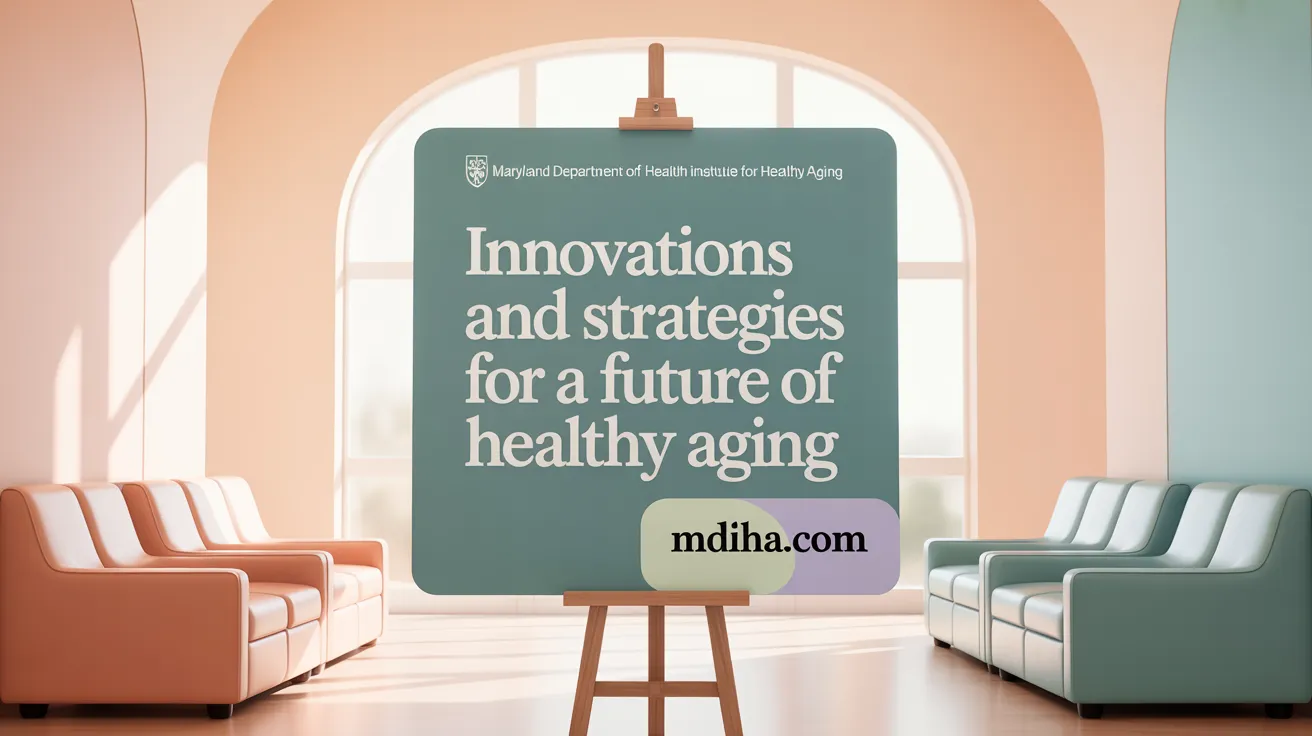Introduction to Healthspan Optimization
Defining Healthspan and Lifespan
Healthspan refers to the duration of life spent in good health, free from chronic diseases and functional decline, distinguishing it from lifespan, which denotes total years lived. While medical advances have extended lifespan, this has not always translated into more years of vitality and independence, highlighting a critical need to focus on prolonging healthspan.
Importance of Personalized, Proactive Longevity Strategies
Modern longevity initiatives emphasize personalized, proactive approaches that tailor interventions to individual genetic, biochemical, and lifestyle profiles. These strategies incorporate advanced diagnostics such as biomarker analysis, genetic testing, and comprehensive health evaluations to create customized plans enhancing healthy aging and disease prevention.
Key Factors Influencing Healthy Aging
Multiple elements shape healthspan, including genetics, lifestyle, and environment. Though genetics contribute approximately 20-25% to longevity, modifiable factors like nutrition, physical activity, stress management, and quality sleep exert a more substantial influence on functional wellness. Technological advances and integrated healthcare models further support optimized aging by enabling early detection and tailored therapeutic interventions.
Integrating Genetic Insights into Personalized Longevity Plans

How do genetics influence aging and longevity?
Genetics account for roughly 20-25% of an individual's lifespan variation. Specific gene variants, notably APOE and FOXO3, have been identified as influential for longevity. For instance, the APOE e2 allele associates with extended lifespan, while the e4 allele increases Alzheimer's disease risk. Studies—including those involving twins—demonstrate that while genetics sets a baseline for aging, environmental and lifestyle factors significantly modulate outcomes (genetics influence aging process). Genetic predispositions provide a framework but do not predetermine healthspan.
What are key genetic markers affecting healthspan?
Key genetic markers influencing aging include:
- APOE variants: Affect lipid metabolism and neurodegenerative risk.
- FOXO3 gene: Linked to cellular stress resistance and longevity.
- Telomere-associated genes: Regulate chromosomal stability and cellular aging.
- Polygenic Lifespan Scores (PLS): Aggregate many small-effect genetic variants to estimate longevity potential.
These markers can inform about susceptibility to age-related diseases and biological aging processes.
How can genetic testing inform preventive health measures?
Genetic testing, such as genome-wide association studies (GWAS) and polygenic scoring, identifies individual variants relevant to disease risks and aging trajectories. When integrated with advanced health diagnostics including hormonal, biochemical, cardiovascular, and neurofunction assessments, a tailored preventive plan emerges. This approach supports proactive interventions, including Hormone Optimization Therapy, personalized nutrition, physical activity, hormone optimization, and targeted therapies enhancing healthspan.
What are limitations and the interplay with lifestyle?
While genetics provides insight, it explains only part of aging variability. Lifestyle factors—diet, exercise, stress management, sleep, and avoidance of harmful behaviors—are more influential and modifiable. Epigenetic mechanisms illustrate how environment and behavior modify gene expression. Therefore, combining genetic insights with personalized lifestyle strategies yields optimal preventive outcomes for healthy aging.
Lifestyle Modifications: The Cornerstone of Sustainable Healthspan

Why are lifestyle choices more influential than genetics in longevity?
Genetics provides a foundational framework influencing about 20-30% of lifespan variability. However, lifestyle choices such as diet, physical activity, sleep quality, and stress management have a substantially greater impact, accounting for more than 60% of healthy aging outcomes. These factors not only contribute directly to overall well-being but also influence biological aging processes through epigenetic mechanisms—modulating gene expression without altering DNA sequences. For instance, engaging in healthy behaviors can activate protective genes linked to longevity and suppress those associated with disease, mitigating inherited genetic risks (Genetics and lifestyle influence lifespan, genetics influence aging process, Genetics and Longevity).
What lifestyle habits optimize healthspan?
Key habits that support sustainable healthspan include:
- Diet: Emphasizing plant-forward diets, such as the Mediterranean style rich in fruits, vegetables, whole grains, lean proteins, and healthy fats like olive oil helps prevent chronic diseases including cardiovascular disease, diabetes, and some cancers (Genetics and lifespan, Healthy behaviors for longevity).
- Physical Activity: Regular aerobic exercises (walking, cycling, swimming) paired with strength training enhance cardiovascular health, muscle mass, bone density, and metabolic function (Healthy Aging Technology, Healthy behaviors for longevity.
- Sleep: Maintaining 7-9 hours of quality sleep facilitates cellular repair, hormone regulation, and cognitive function, with chronic sleep deprivation linked to increased disease risks (Healthspan vs. Lifespan).
- Stress and Mental Health Management: Mindfulness practices, effective stress reduction, and fostering strong social connections support emotional resilience and reduce inflammation and other physiological stress responses (Genetics and lifespan, Genetics and Longevity.
Role in preventing chronic diseases and functional decline
Optimizing lifestyle behaviors significantly lowers the incidence of metabolic syndrome, diabetes, obesity, cardiovascular ailments, and neurodegeneration. For example, maintaining physical activity and balanced nutrition helps regulate blood sugar and blood pressure levels, reducing risks for these common age-related conditions. Moreover, social engagement promotes cognitive health and preserves independence by mitigating loneliness and depression, which are notable contributors to functional decline (Healthspan vs. Lifespan, Community and social connections.
Community and social connections
Sustainable healthspan is also reinforced by robust social networks that provide emotional support, reduce stress, and encourage healthy behaviors. Communities with frequent social interaction often exhibit better mental well-being and longer healthspan, as consistent positive relationships promote purpose and engagement throughout aging (Genetics and Longevity.
In summary, adopting comprehensive lifestyle modifications harnesses environmental influences on gene expression to extend the period of life lived in good health, effectively complementing personalized medical strategies for longevity (Healthspan Optimization Retreat, Genetics and lifestyle influence lifespan, Hormone Optimization Therapy).
Advanced Diagnostics and Personalized Therapies: Technology Empowering Healthy Aging

How does technology enhance healthspan optimization?
Technological advancements revolutionize healthspan optimization by facilitating early and precise detection of aging-related changes. Blood biomarker analyses, comprehensive cardiovascular and neurofunction screenings, and sophisticated AI-driven predictive models enable clinicians to identify subtle physiological shifts before clinical symptoms arise. For example, the ARPA-H PROSPR program accelerates the development of therapeutics targeted specifically at extending healthspan by integrating biomarker research, wearable technology, and decentralized clinical trials. These innovations allow for the formulation of personalized interventions targeting individual biological aging pathways, shifting the paradigm from reactive to proactive and preventive care. More on Technology for Healthy Aging.
What innovative medical interventions support personalized healthspan extension?
Personalized medical interventions for healthspan extension focus on restoring physiological balance and enhancing tissue function tailored to the individual’s unique profile. Bioidentical Hormone Replacement Therapy (BHRT) offers a molecularly precise option for addressing hormonal declines—particularly in menopause—thus mitigating related metabolic and cognitive risks without increasing cancer risk, unlike synthetic hormones. Regenerative medicine approaches, including emerging cellular and tissue therapies, hold promise for repairing age-related damage. Complementing these, digital health platforms enable continuous remote monitoring and real-time health metric tracking, fostering patient engagement and timely therapeutic adjustments. This integration of advanced diagnostics and personalized therapies forms the cornerstone of contemporary longevity medicine, as demonstrated at the Sheba Longevity Center and detailed in Healthspan Optimization Retreat.
Bridging Genetics and Lifestyle: The Role of Proactive, Personalized Health Strategies

How do personalized approaches integrate genetics and lifestyle?
Personalized healthspan optimization combines genetic profiling with detailed lifestyle assessments to create individualized strategies geared toward extending healthy years. This approach involves comprehensive evaluations—including genetic markers like APOE variants and other related factors, hormonal levels, nutritional state, and biochemical markers—which enable clinicians to tailor interventions precisely.
By understanding genetic predispositions alongside lifestyle habits such as exercise, diet, and sleep patterns, healthcare providers can recommend targeted preventive measures and therapies that adapt over time. This ongoing monitoring uses advanced diagnostics, including cardiovascular assessments and neurofunction tests, to detect early deviations from optimal health and enable timely adjustments. For more details on these advanced diagnostics, see Healthspan Optimization Retreat.
Why is a proactive and multidisciplinary approach vital?
Successful healthspan extension depends on proactive, continuous engagement with personalized care plans. Integrating expertise from fields like sleep medicine, neurophysiology, nutrition, and regenerative medicine allows a holistic evaluation of a patient's health status. Learn more about the role of Hormone Optimization Therapy in aging and wellness.
This teamwork ensures that treatment plans address the complex and interrelated aspects of aging, such as hormonal balance during menopause or cognitive resilience. Furthermore, psychological and behavioral support focusing on growth mindset, resilience, and patient empowerment enhances adherence to lifestyle modifications and medical interventions. For insights on adopting a proactive attitude towards aging, visit this resource.
By fostering active participation and using cutting-edge diagnostics and therapies, multidisciplinary care promotes sustained improvements in function and quality of life, redefining aging as a vibrant phase rather than decline. Explore innovations in Technology for Healthy Aging to support this mission.
Future Directions: Expanding Accessibility and Impact of Tailored Longevity Solutions

What Are the Broader Implications of Healthspan Extension?
The growing demographic of individuals aged 65 and older in the United States, expected to rise from 18% to 23% by 2054, presents significant healthcare and economic challenges. Extending healthspan—the period of life spent in good health—can mitigate these challenges by reducing frailty, disability, and chronic disease burden among older adults. ARPA-H’s PROSPR program estimates that increasing healthspan by even one year for 10% of the aging population could lower U.S. entitlement costs by $29 billion annually and generate an $80 billion economic benefit.
Technological advances such as telehealth, remote patient monitoring, and home hospital care models are pivotal in scaling these healthspan improvements. For example, the home hospital model trialed at Brigham and Women’s Hospital demonstrated a 20% reduction in costs and better patient outcomes by shifting care from hospitals to patients’ homes. These innovations enhance accessibility and enable personalized interventions, which are essential for managing complex age-related conditions at scale. For more on Technology for Healthy Aging and digital health innovations, see the Harvard Medical School research.
How Do International Research Efforts Contribute to Innovation in Personalized Longevity?
International collaborations significantly drive progress in longevity science. The Sheba Longevity Center in Israel exemplifies this trend by combining multidisciplinary expertise, including AI, digital health, and aging epidemiology, to revolutionize personalized medicine. Their approach focuses on biological age assessment through biomarkers and advanced diagnostics, enabling precision interventions tailored to an individual’s aging trajectory.
Sheba integrates biobanking, clinical trials of longevity therapeutics, and real-time health monitoring via a specialized app, demonstrating how global research can innovate tools to predict, prevent, and delay age-related diseases. This model accelerates knowledge transfer and the application of evidence-based strategies worldwide, fostering a more integrated and effective approach to Healthspan Optimization Retreat.
Emerging Research and Potential Public Health Impact
Cutting-edge projects like ARPA-H’s PATH initiative, funded with $52 million, aim to identify early physiological and biochemical markers of health decline after age 50. By leveraging AI and next-generation diagnostics, such programs enhance the prediction of chronic disease risk, enabling timely and targeted interventions.
Collectively, these research advancements support a shift toward a proactive, preventive healthcare paradigm that emphasizes personalized, data-driven decisions. This transformation holds promise for improving population health outcomes, reducing healthcare system strain, and promoting a more robust, healthful aging experience globally. Insight into Personalized longevity strategies and Healthspan vs. Lifespan concepts can further elucidate the potential benefits of this paradigm shift.
Conclusion: Embracing a Balanced, Personalized Approach to Healthy Aging
Integrating Genetics, Lifestyle, and Technology for Healthspan
Optimizing healthspan requires a holistic approach that combines insights from genetic predispositions with proactive lifestyle choices and cutting-edge technologies. While genetics influence longevity, accounting for about 20-30% of lifespan variability, lifestyle factors such as nutrition, physical activity, and stress management have an outsized impact on healthy aging. Advances in diagnostics and digital health tools enable personalized assessments that inform targeted interventions, ensuring that prevention and treatment strategies are tailored to individual biological needs.
Advocating Proactive and Individualized Strategies
Personalized healthspan strategies, including biomarker analysis, hormone optimization, and advanced therapeutics, empower individuals to mitigate age-related risks and maintain functional wellness. Regular monitoring of physiological and biochemical markers supports early intervention, promoting resilience and independence throughout later years. Multidisciplinary expertise and innovative therapies present new opportunities to redefine aging beyond chronological constraints.
A Future of Vibrant, Optimized Aging
The future of healthy aging envisions a dynamic phase of life characterized by physical vitality, cognitive clarity, and emotional well-being. Embracing personalized, science-based approaches fosters joyful engagement and resilience, transforming aging into a period of continued growth and fulfillment. Through intentional lifestyle choices and technological advancements, a balanced, optimized healthspan can be accessible to all.
